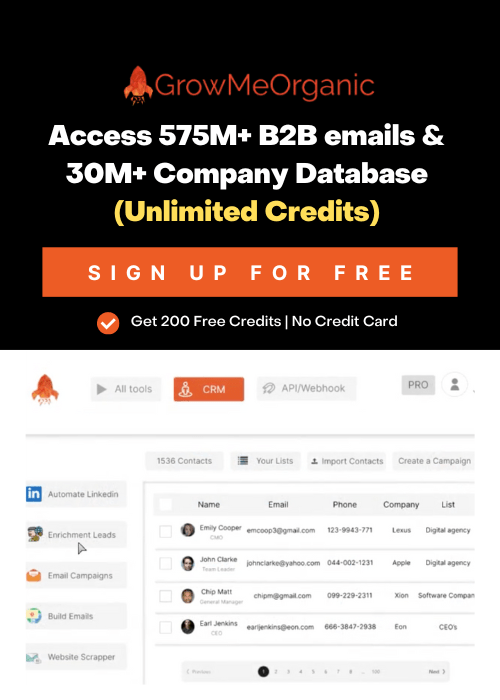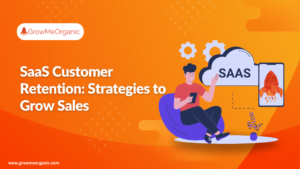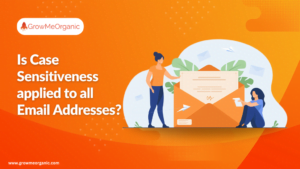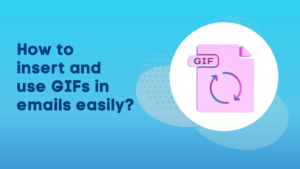Cold emailing seems tough, but it doesn’t have to be!
Writing a cold email is simple at its core. The best ones, though, stand out by capturing attention and delivering real value.
To get responses from cold emails, they must be short, compelling, and spark curiosity. Every sentence should deliver value and have a purpose.
Cold doesn’t mean formal, though. You’re contacting someone who could open doors for your job search, freelance gigs, or collaborations. Think of it like making a strong first impression at a networking event.
Let’s show you how to craft effective cold emails, with tips for improving them and sample templates you can use.
What Has Changed In The Approach To Cold Emailing?
Cold emailing has come a long way from its early days. Back then, it was all about sending one generic pitch to as many people as possible, and surprisingly, it worked. But as inboxes filled up with copy-paste messages, people became less receptive to this approach.
Today, cold emailing has shifted focus. It’s no longer about pushing a hard sell. Instead, it’s about building a connection and showing that you understand your prospect’s business and challenges.
Personalization is key. Tailor your message to address their specific needs, and don’t rush into closing the deal. Take the time to listen. Let your prospects share their struggles, and then show them how you can help solve those issues.
In short, the more you know about your prospects, the better you can tailor your cold emails to resonate with them truly.
10 Steps for Writing a Cold Email Effectively
Crafting a good cold email is an art. It’s about grabbing attention and inspiring a response. Here are 10 steps of writing a cold email:
1. Define Your Goals
Before drafting your email, be clear on what you want to achieve – generating leads, promoting your product, booking meetings, or reaching out to candidates.
It’s not just about your goals but also about the value you offer your recipients. When your objectives align with their needs, you create a win-win situation that fosters engagement and lasting connections.
A clear goal also helps shape your message, guiding you on what details to include to inspire a response.
2. Identify Your Target Audience
Once you’ve set your goals, the next step is to research your prospects and tailor your emails to speak directly to them. Even in cold outreach, knowing who your audience is and what they care about is important. So, dig into their company and role to craft a personal message.
The same goes for prospecting. Target the right people, and you’re already halfway to success. Here are some questions to guide your research:
- Is my audience too broad or too narrow?
- Will my offer bring clear value to them?
- Do I understand what drives their decisions?
- Can I reach them via cold email? Is their inbox accessible?
- Am I focusing on the right decision-makers?
GrowMeOrganic’s Lead Finder, with over 575 million contacts and 15 million companies, simplifies prospecting. Our tool lets you easily filter leads by company, role, location, and more!
3. Craft An Irresistible Subject Line
Your email subject line can make or break your outreach campaign. It must capture attention, feel personal, and speak directly to your prospect—just like a well-chosen idiom.
Here’s the difference:
Bad: “Web Design Services Available”
Good: “[Prospect name], struggling with {{challenge}}?”
The first is generic, while the second connects directly with the prospect’s pain point, making them more likely to open the email.
To craft irresistible subject lines:
- Keep it short, relevant, and engaging
- Use simple, impactful words
- Ask targeted, industry-related questions
- Provide valuable insights
- Spark curiosity about your offerings
“If you write subject line(after you wrote your email copy) with 3 or less than 3 words long, you will start standing out from majority of people who also send cold emails to your ICP.
Growth Marketing Manager at Maildoso.
4. Start With A Relevant Opening
After grabbing your prospect’s attention with a strong subject line, the next step is to keep them hooked with a compelling introduction. You only have a few seconds before they move on, so skip the cliches.
Start with something that shows you’ve done your homework – whether it’s an interesting fact, a recent achievement, or a challenge they’re facing.
For instance:
“As the Director of Marketing at [Company], I’m sure you get flooded with cold emails. I’ll keep this brief to respect your time…”
This thoughtful approach beats the usual “How are you?” and avoids making it all about you.
5. Introduce Yourself And Your Purpose
After nailing your cold email introduction, briefly explain who you are and why you’re reaching out. Be clear and direct so they immediately get the context.
For example:
“My name is [your name], and I’m the [your position] at [your company]. I noticed your recent partnership with [relevant company] on [relevant project], and I wanted to connect.”
The goal is to introduce yourself quickly and shift focus to their needs. Avoid long, self-promoting paragraphs.
6. Sympathize With Their Pain Points
Now, quickly show that you understand their challenges and empathize with their struggles. This builds connection and shows that you’re aligned with their needs.
Mention a specific pain point you’ve identified in your research, and explain how you can help solve it.
For example:
“As a marketer, I understand how overwhelming it can be to choose the right marketing automation tool on a tight budget. That’s exactly why I’m reaching out…”
By relating to their challenges, you position yourself as a helpful partner, not just another salesperson.
7. Add Your Unique Value Proposition
When sending a cold email, you’ve got just a few seconds to get attention, and that’s where your value proposition shines.
A strong value proposition shows you get what the recipient wants and how your solution meets those needs. By highlighting what makes your offer unique, you give them a reason to choose you over the competition.
This relevance makes your email more enticing and increases the chances they’ll keep reading. When your value proposition aligns with their needs, it creates a connection that encourages them to engage with your message.
Example:
“We know your team has incredible skills but often needs help with time and resources for boosting outbound lead generation. Our app can automate the mailing process, letting your team focus on what they do best: closing deals.”
8. Include A Clear & Direct Call-To-Action (CTA)
Your recipient reads your email, intrigued by your product but unsure what to do next. It might sound odd, but this is true for many cold email campaigns.
You can have an eye-catching subject line and compelling copy, but without a strong call to action (CTA), you risk losing their interest.
Creating an effective CTA isn’t as straightforward as it seems, yet it’s essential to guide them to the next step – like scheduling a meeting or a call.
Clarifying what you want them to do makes it easier for them to respond. Remember to strike a balance: you want to be direct, not overly salesy.
9. Close Your Email With Appreciation
A little gratitude goes a long way! Ending your emails with a note of appreciation expresses your thanks and leaves a positive impression on the recipient.
Here are a few examples to inspire you:
- “Thank you for your time and consideration.”
- “I truly appreciate your support.”
- “I look forward to your continued support. Thank you in advance.”
10. Don’t Forget Your Email Signature
Remember to add a professional email signature with your name, title, company, phone number, and email address. This will make it easy for recipients to reach out to you.
Think of your email signature as a virtual business card. Including your company’s name, logo, and colors boost brand recognition and leave a lasting impression.
Plus, it builds trust with potential customers by providing essential contact information and social media links. This increases response rates and paves the way for strong business relationships.
Four Mistakes To Avoid
“The business owners are busy and do not have time to figure out what you are wanting their time. The email need to be on point to a problem that is giving problem in the industry and you have the answer and they need to know that they can get it to schedule an appointment.”- Dan Carter Producer at Power Lead System
Here are a few pitfalls to avoid when crafting killer cold emails –
❌ Generalizing the recipient – One of the biggest missteps in sending cold emails is generalizing the recipient. When your email feels robotic and impersonal, it’s a total turn-off for real people.
✔️ Instead, customize your messages for each prospect. This will show them that you genuinely want to connect.
❌ Being too salesy or aggressive – It’s frustrating when a salesperson cares more about closing a deal than understanding our needs.
✔️ So, instead of using hard-sell tactics, focus on building relationships and adding value. A friendly, optimistic tone will help you make a fantastic first impression.
❌ Sending emails without a clear goal or CTA – Many email campaigns struggle to motivate recipients to take action because they lack clarity and compelling benefits.
✔️ Craft an effective CTA that addresses specific questions: What do I want my recipients to do? How will they know what to do? Focusing on these aspects guides recipients toward the desired action.
❌ Neglecting to follow up – Well-crafted follow-up emails are essential; sending even one can set you apart from the competition. Most people don’t do it, so you’ll already be ahead!
✔️ Sending a follow-up shows you’re proactive, considerate, and genuinely interested in sparking meaningful conversations.
How To Send Your First Cold Email Campaign With GrowMeOrganic
1. Create A New Campaign
First, create a new campaign by clicking on “Add Campaign.”
2. Add Your Campaign Name
Next, choose the account from which you will send emails and name your campaign.
3. Set The Sending Limit
Now, set a sending limit, which is the ultimate step. No more than 50 seems like a good start for a human-like outreach.
4. Write The Email
Craft a catchy subject line and write your email content. Don’t forget to use snippets to personalize your messages.
5. Schedule The Sending Time
Schedule a time when you want the emails to be sent.
6. Add Follow-Ups
Do not ignore follow-ups, as they are a must-step.
7. Add Your Prospect List
You can easily import your prospects from a file, add them manually, or connect with popular prospecting tools and Google Sheets.
8. Send A Test Campaign
Send yourself a test campaign to check that your emails look great and all the links work perfectly.
9. Click Start
You’ve started off your first cold email campaign in GrowMeOrganic – see, that wasn’t so hard after all!
Top Cold Emailing Templates & Examples
Now that we’ve mastered writing cold emails, let’s learn how to tailor them to different situations!
Cold Email Template For Networking

Cold Email Example For Partnership

Cold Email Template For Internship Inquiry

Cold Email Example For Potential Client

Cold Email Template For Follow-Up

Final Words
Writing a cold email can be tricky, but if you follow the best practices outlined, you’ll be well on your way to crafting a response-worthy message. Keep it short and personalized!
If you don’t get an immediate reply, don’t worry—it happens! Consider adding automated follow-ups to gently check in with prospects who might need a little extra encouragement.
Remember, persistence is key, but don’t come off as pushy. Show your prospects that you’re genuinely there to help and ready to address their pain points.
Schedule a demo now or contact GrowMeOrganic today for a seamless start, and write an email that works.
FAQs
Q 1. How Long Should A Cold Email Be?
Keep it concise – 2 to 5 sentences is all it takes. Studies show that 50 to 125 words are perfect for sparking interest and kicking off a conversation. It’s about making your point quickly and effectively.
Q 2. What’s an Example of Writing a Cold Email?
When writing a cold email, begin with an attention-grabbing subject line and a personalized greeting. Briefly introduce yourself, clearly state your purpose, and add a call to action. Keep the message concise and respectful of the recipient’s time.
Q 3. How To Stand Out In Cold Emails?
Personalize your message by addressing the recipient by name and referencing specific details about their work or interests. Keep your subject line catchy and relevant, and ensure your email is concise, highlighting the value you can offer.
Q 4. Is Cold Emailing Illegal?
Cold emailing isn’t illegal but must comply with regulations like the CAN-SPAM Act. You must provide a clear opt-out option and include your contact information. Always ensure your emails are respectful and relevant to maintain a good reputation.
Q 5. Does Cold Emailing Really Work?
Yes, cold emailing can be highly effective when done right. Targeting the right audience with personalized and compelling messages can generate leads, build connections, and open doors to new opportunities.
About Post Author
Anant Gupta
Growth Hacker, Marketing Automation Enthusiast & Founder of GrowMeOrganic








